
Conserving and Protecting
A Force of Nature!
The relationship between habitat degradation and species extinction is clear. Species cannot survive if suitable habitats are not available. Other species that are part of the habitat are also critical to species survival. If one species does not survive, there will be repercussions on all other species in ways that we do not currently understand. The National Audubon Society was founded in 1905 to protect herons, egrets, gulls, and other waterbirds. The organization has expanded its mission and grown to be one of the largest conservation groups in the world.
Protecting birds, habitats, and biodiversity preserves a healthy environment for all humanity. This mission is even more important today as natural habitats are being changed or lost forever. The Audubon Society of Corvallis supports the conservation of native Willamette Valley birds and habitats through financial contributions, volunteer work, and partnering with other agencies with similar goals to protect species and habitats.
Conserving Habitats
Hiking Trails
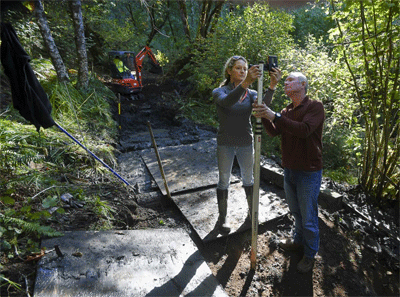
It is often easier to conserve natural habitats than to try to restore damaged ones. MWBA has joined partners to extend the scope of several new trail projects that travel through important habitats. One of the largest projects is the creation of the Homer Campbell Trail at William H. Finley NWR. A boardwalk winds through deciduous riparian forest south to the observation blind, which marks the end of the trail from November 1 – March 31. The rest of the year, the trail continues to Cabell Marsh, which is outstanding waterfowl habitat. Amy’s Trail, named in memory of Amy Schoener, is only a third of a mile long, but it provides a connection between Benton County’s Fitton Green Natural Area and a 172-acre parcel owned by the Crestmont Land Trust west of Corvallis. Two short trails were constructed at Hesthavn to explore the different habitats.
Hesthavn – Pulling Together

Formerly a horse pasture and barn, Hesthavn was repurposed as a small nature reserve. A solar composting toilet and rainwater catchment system were installed as green options because there is no city water connection. Many invasive weeds grew on the site when ownership was transferred. Ray Drapek, Hesthavn Chair, and Julie Gibson lead the fight to return the property to its original, native flora. The never-ending battle with non-natives includes Himalayan blackberry, false brome, teasel, and Canada thistle. Volunteers are invited year-round to join the confrontation in the native plant garden, trails, buildings and facilities. Botanists interested in joining the restoration efforts in the meadow are warmly welcomed!
Protecting Species
Western Bluebirds
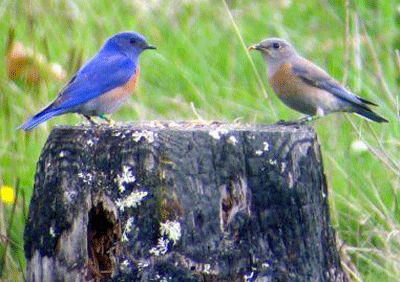
The mission of the Bluebird Trail group is to promote the conservation of the Western Bluebird (Sialia mexicana) and other native cavity-nesters through field work, scientific studies, and public education. Elsie Elzroth established a nest box trail for bluebirds in the Corvallis area in 1976. Her observations helped define the social and nesting behavior of the Western Bluebird, which surprisingly is quite different from the better-understood Eastern Bluebird. Volunteers continue the project by placing, maintaining, and monitoring the nest boxes each year. Nest success reports are tallied to track trends in the population.
Streaked Horned Larks
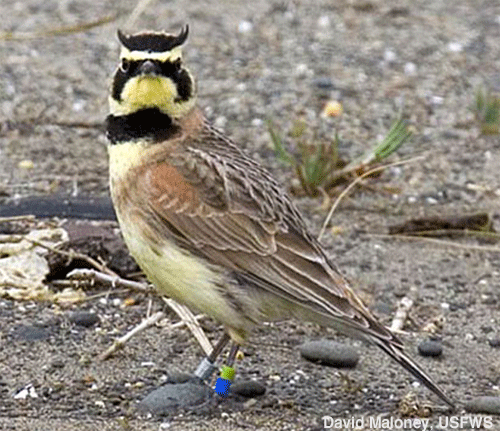
Large, open grasslands are key to the survival of Streaked Horned Larks which forage and nest on the ground. Habitat degradation due to agricultural activities and using rodent pesticides have resulted in low reproduction. In 2019 ASC (now MWBA) funded a biological intern to assist biologists with population monitoring at William L. Finley, Ankeny, and Baskett Slough National Wildlife Refuges. Results will help answer questions about habitat use, timing of nesting attempts, and reproductive success.
2021 Monitoring Report for Streaked Horned Larks in Willamette Valley Refuges
Contact Your State and Federal Elected Officials
When federal, state, or local government agencies propose a significant environmental action, the agency is required to submit a public notice. When you submit written comments or petitions, you can add your voice to others and influence decisions on the issues you care about. These written comments become part of the public record.
Tips for writing an effective comment include 3 Cs: be clear about your feelings, concise with your words, and convincing. Use specific examples that illustrate your points, state clearly what you support and do not support, and offer alternatives if possible. Other helpful information can be found here.
Four Conservation Heroes
Save the rainforest! Save the elephants! Participating in global conservation efforts is a great way to protect habitats and species. But such actions can be limited to those who can afford them. Look no further than your own backyard for an equally important need for conservation efforts. Things you can do around your home include: plant native species, eliminate pesticides, buy local, reduce waste, downsize, or join neighbors to improve common areas for wildlife. Here are four people who saw a problem and dedicated time and energy to improving their local area.
Homer and Meg Campbell

Homer was a life-long Willamette Valley resident, scientist, ASC (now MWBA) chapter leader, Chat editor, and legendary environmentalist. He spent a great deal of time at the national wildlife refuge that he loved – William L. Finley. Located 12 miles south of Corvallis, it contains some of the last remaining unchanged Willamette Valley prairie, as well as several other habitat types representative of this area. Its location near four metropolitan areas makes it readily available to hundreds of thousands; it is a very popular site for birding, wildlife studies, and environmental education.
The Homer Campbell ASC Environmental Award, established in 2005, was created in his honor. The award recognizes a local (Linn, Benton, Lincoln, and Polk counties) individual or organization that has made significant contributions in the areas of environmental stewardship, awareness, and outreach. In 2006, ASC (joined Finley NWR, Friends of Willamette Valley Refuges, and Greenbelt Land Trust to create an accessible boardwalk trail and observation blind in memory of Homer Campbell at his beloved wildlife refuge.
Meg Campbell’s sense of beauty combined with her sense of civic responsibility led to her co-creating Greenbelt Land Trust. She wanted public land preserved all around her community that would give local wildlife and people a place to breathe free. That idea was appealing to many and through her organizational skills, persistence and persuasion, and the efforts of many people, that idea is now a fact.
Amy Schoener
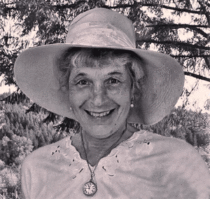
Amy grew up in New York City but always knew she was destined to live on her own farm. She earned degrees in Biology from Harvard University, and went on to research tropical marine and terrestrial animals. The West Coast beckoned, and Amy accepted a professorship in oceanography at the University of Washington. In addition, she bought her first farm. However, as her academic commitments took over her time, she realized her farm would never be consistent with her ecological values. So, she left her academic job and learned farming from friendly neighbors.
A new love brought her to Wren, a few miles from Corvallis. There she grew organic fruits and vegetables for farmers’ markets, tended sheep, kept bees, and shared her love of organic cooking with friends and family. In recent years she joyfully drove an all-electric car and went solar at the farm.
Amy was a dedicated steward of the land. She served long terms on the Benton County Planning Commission, the Board of the Willamette Riverkeepers, and the Marys River Watershed Council, which she helped to form. She was a long-time member of ASC (now MWBA), and made a generous bequest. ASC decided it was best to honor her with a new trail funded and built in collaboration with private and public partners. Amy’s Trail was dedicated in 2018 and it connects two valuable greenspaces and also expands the opportunities for trail users.
Elsie Elzroth
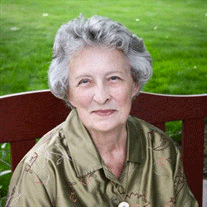
In 1976 the Western Bluebird was placed on the Audubon “blue list,” with only 6 known nesting pairs in Benton County. Elsie collaborated with OSU biologists to document behavioral and physiological differences between the Western Bluebird and other bluebird species. She recorded intra- and interspecies interactions, habitat and weather changes, breeding and social behavior, patterns of geographical movement, and causes of morbidity and mortality.
Elsie turned her rehabilitation expertise to bluebirds and learned necropsy and study skin production. As she reached out to local and regional landowners and organizations, Elsie became known as “the Bluebird Lady.” She was a charter member of ASC (now MWBA) and passed her knowledge and passion on to thousands of individuals over the years.
In the late 1980s and early 1990s, the data and anecdotal information compiled by Elsie became nationally recognized for its value to the scientific community. Elsie’s work was published in a number of journals, from bluebird society newsletters to peer-reviewed ornithological works. With untiring action and perspective, she has devoted her life to the study and conservation of a beautiful and charming bird that was once quite common in the Willamette Valley, and she has made a difference.





